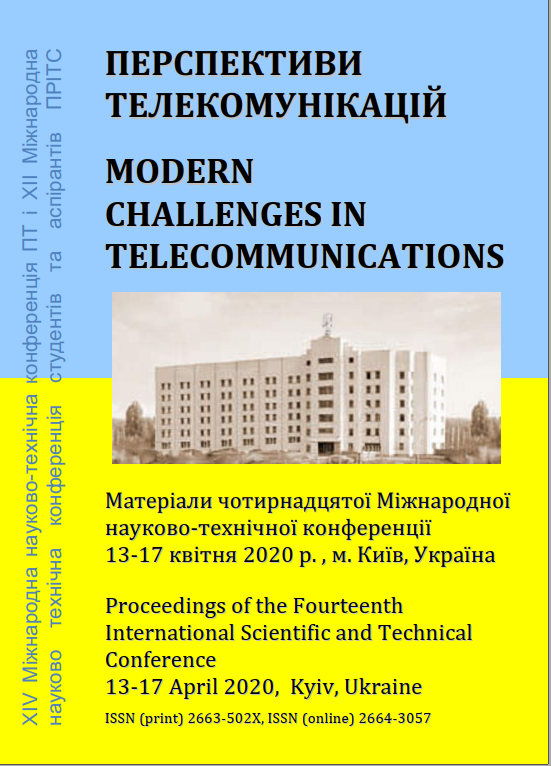ЗАСТОСУВАННЯ ТРАНСИВЕРУ NUAND BLADERF X40 SDR ДЛЯ ФОРМУВАННЯ ТЕЛЕВІЗІЙНИХ СИГНАЛІВ СТАНДАРТУ DVB-S2
Ключові слова:
ТРАНСИВЕР, СТАНДАРТ DVB-S2Анотація
У цій статті висвітлено основні переваги використання стандарту супутникового телебачення DVB-S2. Було розглянуто формування цифрового телевізійного сигналу DVB-S2 з багатопрограмного транспортного телевізійного потоку з використанням трансиверу Nuand BladeRF x40 SDR, що працює в програмному середовищі GNURadio.
Application of Nuand BladeRF x40 SDR transceiver for
generating television signals of DVB-S2 standard
This article highlights the main benefits of using a DVB-S2 satellite TV standard. DVB-S2 digital television signal generation from a multi-program transport TV stream using Nuand BladeRF x40 SDR transceiver operating under the GNURadio software environment was considered.
Посилання
DVB-S2. Digital Video Broadcasting (DVB); Second generation framing structure, channel coding and modulation systems for Broadcasting, Interactive Services, News Gathering and other broadband satellite applications; Part 2: DVB-S2 Extensions. URL:https://www.etsi.org/deliver/etsi_en/302300_302399/30230702/01.01.01_60/en_30230702v010101p.pdf.
Nuand BladeRF x40. URL:https://www.nuand.com/product/bladerf-x40/.
##submission.downloads##
Як цитувати
Номер
Розділ
Ліцензія
Авторське право (c) 2020 Анастасія Олексіївна Мар'яненко, Гліб Леонідович Авдєєнко

Ця робота ліцензується відповідно до Creative Commons Attribution 4.0 International License.
Authors who submit to this conference agree to the following terms:a) Authors retain copyright over their work, while allowing the conference to place this unpublished work under a Creative Commons Attribution License, which allows others to freely access, use, and share the work, with an acknowledgement of the work's authorship and its initial presentation at this conference.
b) Authors are able to waive the terms of the CC license and enter into separate, additional contractual arrangements for the non-exclusive distribution and subsequent publication of this work (e.g., publish a revised version in a journal, post it to an institutional repository or publish it in a book), with an acknowledgement of its initial presentation at this conference.
c) In addition, authors are encouraged to post and share their work online (e.g., in institutional repositories or on their website) at any point before and after the conference.

